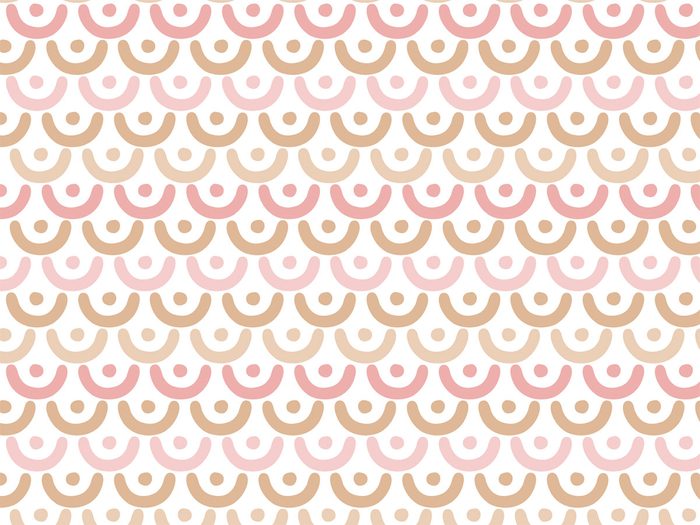
Can breast cancer be prevented?
Canadian Cancer Society predicts, in 2019 alone, 26,900 women will be diagnosed with breast cancer. A startlingly large figure.
However, thanks to extensive research and advances in tech, there are preventative measures that those considered to be high-risk of developing breast cancer can take. One (but by no means the only) approach that could reduce the risk in high-risk women is a prophylactic (preventative) mastectomy.

What is a mastectomy?
In simple terms, a mastectomy is an operation during which one (unilateral) or both (bilateral) of the breasts are removed. The surgery is predominately used as a form of treatment for those diagnosed with cancer, but can also – depending on the individual and personal circumstances – be an option for women with a very high risk of developing breast cancer.
“There are different kinds of mastectomies depending on whether a women is having reconstruction [where the breast is rebuilt using an artificial implant or a woman’s own tissue] at the same time or not,” says Dr. Adena Scheer, surgical oncologist at St. Michael’s hospital and assistant professor at the University of Toronto. “If we are doing a reconstruction we want to save the skin (imagine peeling an orange out and leaving the peel to be filled in) and in some cases, if it’s a preventative mastectomy, and depending on patient preference and original breast size, we may preserve the nipple and areola as well.”
“At our centre and many across Canada the general surgeon or surgical oncologist does the mastectomy and a plastic/reconstructive surgeon does the reconstruction afterwards,” she says. “It is typically day surgery, depending on the type (if any) of reconstruction.”
So, how do you know if you are classed as high-risk?

What makes you high-risk of developing breast cancer?
If you are considered high-risk, it means that your risk percentage is around double (or higher) that of the average woman, which equates to a 25 percent and up lifetime risk of developing breast cancer, according to Dr Scheer, and there are numerous elements that can determine your risk percentage.
“There are factors that increase a woman’s risk that are potentially modifiable, and then there non-modifiable risk factors,” says Dr. Scheer. “Examples of modifiable risk factors are heavy alcohol intake and a sedentary lifestyle. Non-modifiable risks include a strong family history of breast or breast-related cancers, a history of radiation exposure (typically for childhood lymphomas) and genetic mutations such as the BRCA 1 and 2 gene (among others).” (See if your diet can affect your risk for breast cancer.)
Research suggests that around 5-10 percent of breast cancers are caused by an inherited gene mutation (whereby there are alterations within a gene which mean that the cell it controls, essentially, isn’t working properly), and that BRCA 1 and 2 gene mutations occur in around 1 in 500 people. However, a woman with the BRCA 1 or 2 gene is five times more likely to develop breast cancer than those without the gene.
Be sure to consult your GP if you believe yourself to be high-risk, who will advise on appropriate prevention measures for you and your specific situation. There are, in fact, a number of methods they may suggest… (Check out these breast care advancements that can change how the disease is fought.)

Is a mastectomy the best form of prevention?
“If a women is considered high-risk we tend to recommend enrolment in the high-risk screening program offered through the Ontario Breast Screening Program,” says Dr. Scheer. “This program does not offer prevention, but early detection. It involves an assessment of risk, genetic testing if indicated and, if a woman qualifies, a yearly mammogram and breast MRI starting at the age of 30.”
Prophylactic mastectomies, and sometimes oophorectomies (removal of the ovaries), are discussed as options for women with a known genetic mutation, such as the BRCA 1 or 2 gene, according to Dr. Scheer, but it isn’t the only option. High-risk screening and medication can also be used.
“For women with a family history, but not a high-risk family history, I recommend starting routine mammograms 10 years earlier than the youngest family member affected, or at age 50 (whichever is first),” advises Dr. Scheer. “In North America women tend to be more surgically aggressive and opt for mastectomy and reconstruction when they are considered high-risk, whereas in Europe they tend to opt for high-risk screening.”
A 2016 US study which looked at the number of mastectomies over a 9-year time period confirms Dr. Scheer’s theory. It found that the rate of bilateral mastectomies without any diagnosis of breast cancer rose from 2.1 to 4.4 per 100,000 adult women – double the amount. This could, perhaps, have been influenced in-part by the “Angelina affect,” increased awareness surrounding gene mutations and preventative mastectomies following Angelina Jolie’s decision to undergo the procedure in 2013 after testing positive for the BRCA1 gene mutation. (See other celebs who have inspired us with their strength in dealing with breast cancer.)
Studies suggest that a preventative mastectomy has the potential to reduce the risk of developing breast cancer in high-risk women by around 90 percent. However, there are serious factors to consider before signing up to surgery, including mental wellbeing.

How can a mastectomy affect mental wellbeing?
Any invasive surgery or, indeed, risk of illness, has the potential to trigger anxiety and depression, whether or not there is prior history of mental illness. This is true of mastectomies too, even when they are preventative.
Dr. Scheer believes there to be a difference in the effect a mastectomy has on mental health depending on the type of surgery. “There are many studies looking at the impact of mastectomy on a woman’s mental health,” she says. “Most have shown a benefit, in particular in the short term, to immediate reconstruction, versus delaying reconstruction or opting for no reconstruction at all. It’s hard to wake up without a breast.”
An IJPC study investigating the relationship between body esteem and mental health in breast cancer patients confirms Dr. Scheer’s belief. It found, after monitoring women that had breast-conserving surgery, immediate breast reconstruction following mastectomy and a mastectomy alone, that a mastectomy in general has a “negative impact on emotional, psychological, and social functions because patients experience circumstances similar to that of an amputation.” However, those able to have immediate breast reconstruction are likely to experience higher psychosocial wellbeing than someone having a mastectomy alone.
All things considered, there is no simple answer when it comes to preventing breast cancer. There is no guaranteed approach, sadly, and the method that works best for you will depend on your risk percentage and access to, and affordability of, preventative measures, to name a few. Step one, though, is to take your concerns to your GP, and together you can devise a plan of action.
Next, read about how one woman’s life changed for the better after breast cancer.
